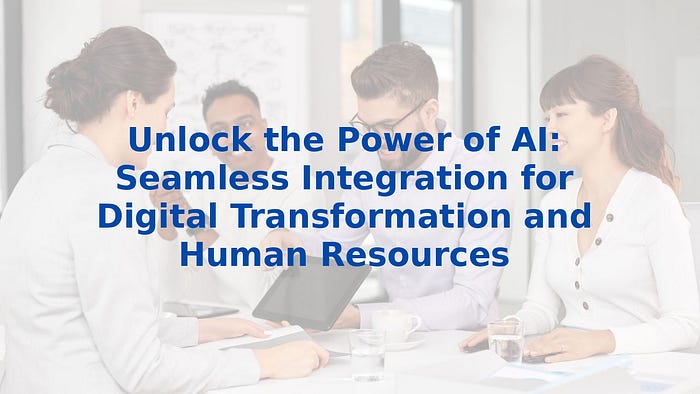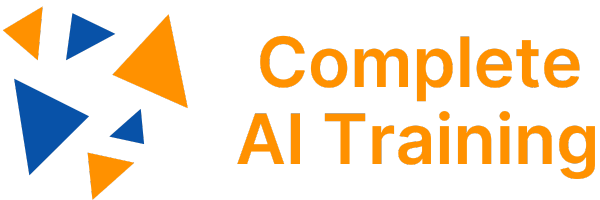Unlock the Power of AI: Seamless Integration for Digital Transformation and Human Resources
You’re moving toward AI and building a digital adoption strategy, so I have a question for you. Where does your human resources team fit in? If you said “nowhere” or just blanked, you might need to back up. While you do need a robust digital adoption strategy in place to make the move to AI sooner rather than later, your human resources team is a vital part of this transition. Let’s take a look at how this most “human” part of your human team, HR, can ease the transition to digital adoption with the right training and a mindset shift.
AI isn’t just software. It’s part of the team.
[Related Article: Problem Solving with Data for a Better Business]
AI is an intelligent organism capable of reaching conclusions about your data and offering solutions based on that data. Your team works with that data almost like a new team member. It needs to be involved in all the conversations and up to speed with company culture to produce insights that fall in line with the company’s mission.
HR is designed to acclimate not only new team members to the surroundings but current teams to the new employee. Here, HR can take an active role in working directly with C-suite executives and stakeholders to ensure a seamless transition. They can make sure everyone understands the benefits of AI adoption and act as a centralized repository for questions and concerns.
AI Will Take Some Jobs
It’s inevitable. As you shift to automated systems, AI is going to make some of the jobs on your team obsolete. Human Resources could be an excellent resource for figuring out how to preserve as many of your employees as you can.
Loyal employees are highly valuable. HR is already responsible for processing things like promotions and transfers, so giving employees a chance to filter through your ranks as AI replaces their work could help build company morale and further the bond between you and your existing employees.
Good HR knows your team’s strengths and weaknesses, their interests, and their goals. Use your HR to help fill gaps or place team members in other departments where their talents are needed. HR can also help decide when it’s valuable and possible to provide continuing education for employees to fill those positions.
AI Requires New Job Descriptions
The writing is on the wall. You’re going to need experts, and they’re going to be expensive because no one else can do what they do. Getting your HR team onboard instead of in an antagonistic position can help you get the talent you need.
We’ve written a few times about ridiculous job postings for data scientists, but this is even more pronounced with AI experts. The usual HR buzzwords aren’t going to fit. Education is a fluid matter, for instance, with an up-and-coming coding boot camp whiz with an explosive Github profile operating on par with that MIT graduate. Experience is amorphous. You want results, not years of slaving away at mediocre code.
It’s not that these things don’t matter. It’s that they matter differently than they did during the habit-heavy jobs of the industrial age. This is the age of Agile, not assembly lines, and your HR team needs to be ready.
[Related Article: What are MLOps and Why Does it Matter?]
Expand Your Digital Adoption Plan
An excellent digital adoption plan is critical to your AI mission, but don’t underestimate the human factor of that digital adoption. Your HR can also be an essential part of your AI mission by leading the human element of your change and making sure your team is ready and able to adjust to the changes.
If HR isn’t on board quite yet, you’re not doomed. Helping them understand the potential value of the above resources, from what AI brings to what shifted team members can do, can help bring them on board. Focus on these key points:
- AI isn’t just new software. It’s going to change the face of your team if deployed correctly. HR doesn’t need to sleep on this thinking the tech department has it covered. Once they make the mindset shift, they could be more on board with what needs to happen.
- Retraining your HR to understand how job descriptions are going to change when bringing in your first AI professional on board. They may not understand the compensation range based on new hiring factors, so building that case could make the transition a lot smoother.
- Getting the full integration of your team will require you to build the trust of your team that AI won’t upend their lives with no recourse. While some positions may be lost because of AI, there are ways to utilize your human resources team to help reconfigure your company culture. Make sure you use them.
Digital Adoption for AI should involve your HR because the strategy to adopt AI and bring on the talent needed to deploy it well will need their support anyway. The genuine human need to integrate with AI to make it work successfully and ethically will involve the department of your organization that cares for your people, and they could help lead the transition.
Read more data science articles on OpenDataScience.com, including tutorials and guides from beginner to advanced levels! Subscribe to our weekly newsletter here and receive the latest news every Thursday.
Explore our offerings at: Complete AI Training, see the complete list of courses at Courses A-Z, check out AI certifications at AI Certification, and sign up for unlimited access at Complete AI Training Portal.

